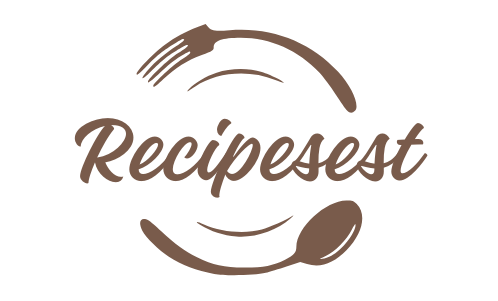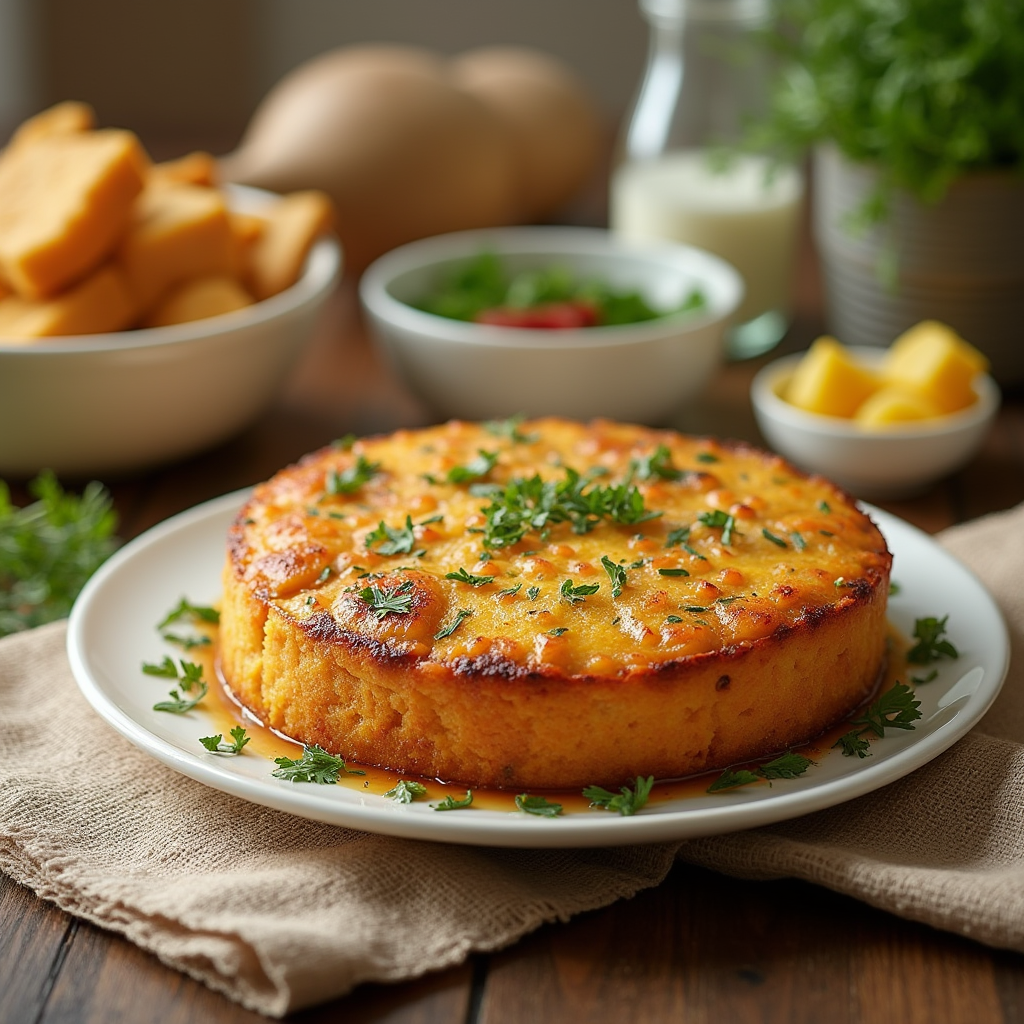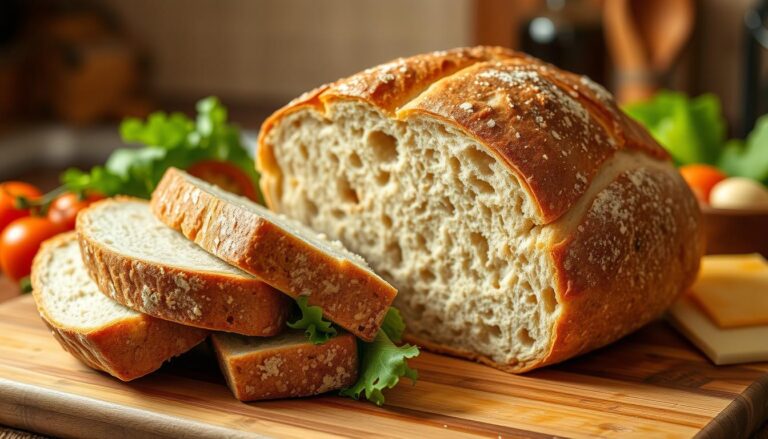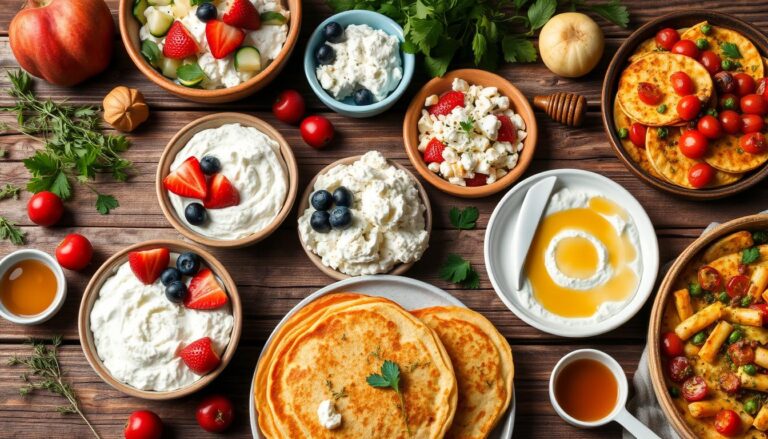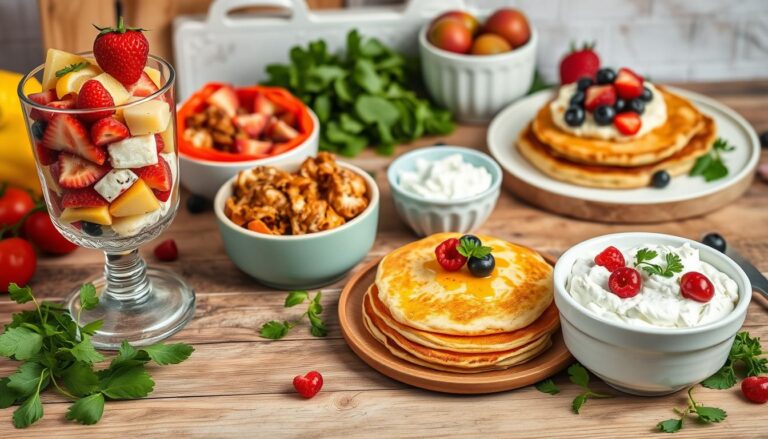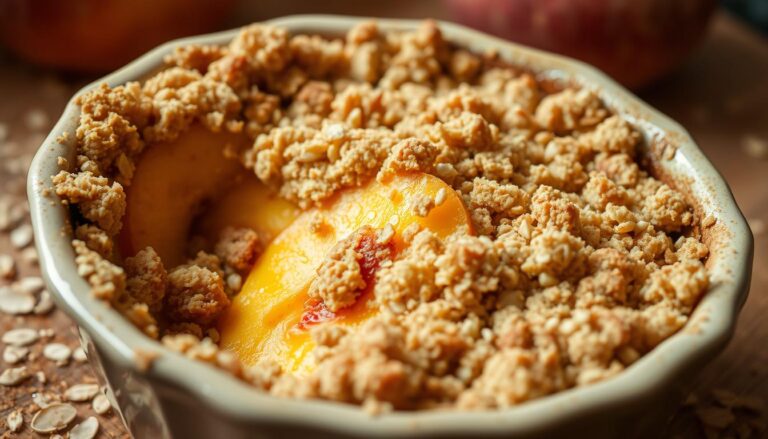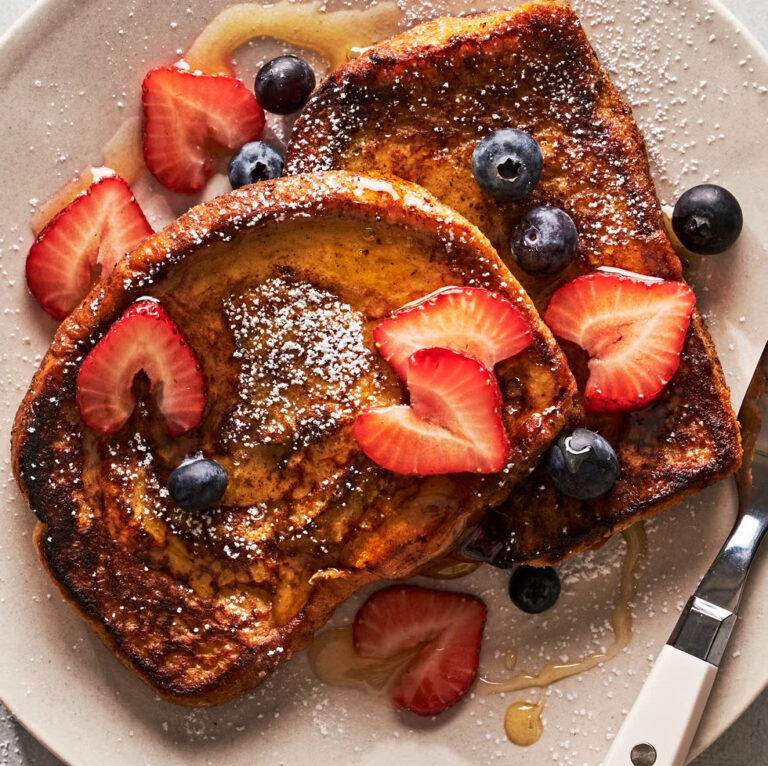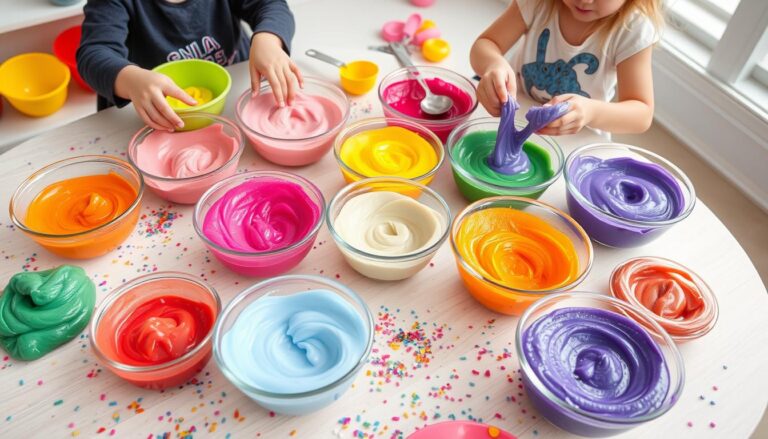Easy Home Economics Class Cake Recipe
Easy Home Economics Class Cake Recipe Starting your home economics class? Get ready to become a baker with this easy cake recipe! This guide is perfect for beginners and those who love baking. You’ll learn about kitchen safety and how to mix ingredients well.
So, let’s start making a delicious cake. It will surely impress your teacher and friends!
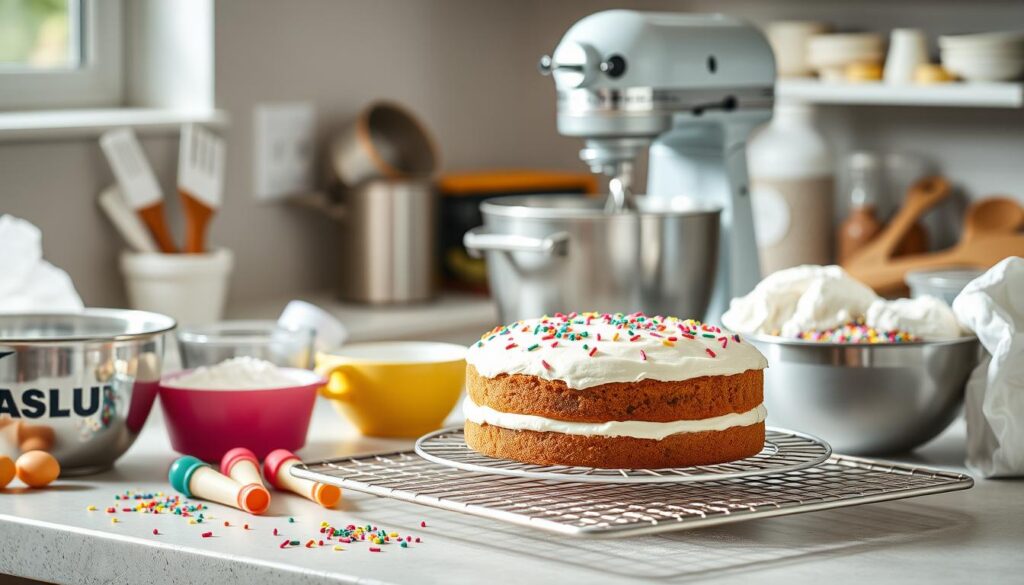
Key Takeaways
- Gain a solid understanding of basic baking principles and kitchen safety for home economics classes.
- Learn how to properly read and follow recipes to ensure successful baking outcomes.
- Discover the essential ingredients and their unique functions in creating the perfect cake.
- Master step-by-step mixing techniques to achieve a moist and fluffy cake texture.
- Explore tips for proper pan preparation and temperature control for optimal baking results.
- Identify and avoid common baking mistakes to ensure your cake turns out flawless.
- Learn basic frosting techniques and simple decoration ideas to elevate your cake’s appearance.
Introduction to Basic Baking in Home Economics
Home economics classes introduce students to the basics of baking. It’s a great start for anyone, whether you’re new or want to be a pastry chef. We’ll cover kitchen safety, essential tools, and how to follow recipes. These are the basics for making tasty treats.
Understanding Kitchen Safety and Hygiene
First, safety and cleanliness are key in the kitchen. Culinary arts education teaches the importance of a clean workspace. This ensures your food is safe and tastes great. You’ll learn about washing hands, wearing the right clothes, and avoiding dangers like hot surfaces.
Essential Baking Equipment for Students
Having the right tools is important for student cooking. You’ll need measuring cups, spoons, bowls, and spatulas. Knowing these tools well helps you cook with confidence and precision.
Reading and Following Recipes
Being able to read and follow recipes is crucial. Recipes guide you through making your treats. Paying attention to measurements, mixing, and baking times is key. This way, your culinary arts education will lead to tasty results.
| Essential Baking Equipment | Description |
|---|---|
| Measuring Cups and Spoons | Accurately measure dry and wet ingredients for precise recipes. |
| Mixing Bowls | Provide ample space for combining and manipulating ingredients. |
| Whisk | Efficiently blend and incorporate ingredients for a smooth texture. |
| Spatula | Useful for scraping down bowls, folding in ingredients, and spreading batters. |
| Baking Pans | Various sizes and shapes for baking cakes, cookies, and other pastries. |
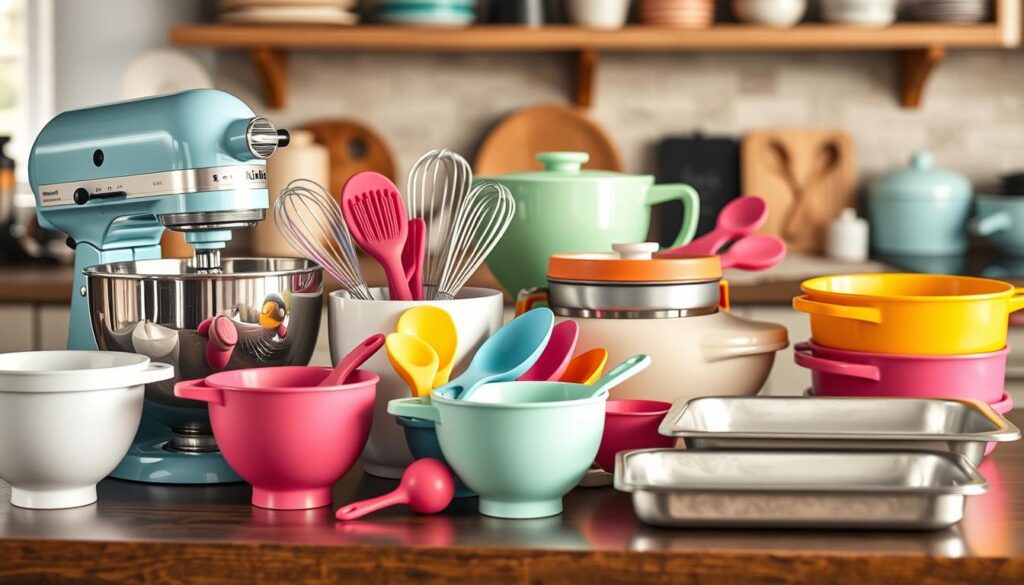
The Perfect Home Economics Class Cake Recipe
Are you a student in a home economics class looking to master the art of classic desserts? This foolproof cake recipe is perfect for you! It’s simple yet delicious, great for beginners to improve their baking skills and impress classmates.
This cake recipe has a moist, flavorful sponge. It’s the base for many decorative options. You can choose from a classic buttercream frosting or something more creative. This cake will be the highlight of your next student cooking showcase.
Ingredients:
- 2 cups all-purpose flour
- 2 teaspoons baking powder
- 1/2 teaspoon salt
- 1/2 cup unsalted butter, softened
- 1 1/2 cups granulated sugar
- 3 large eggs
- 1 teaspoon vanilla extract
- 1 cup milk
With just a few simple ingredients, you can make a delightful cake. The flour, baking powder, and salt give it structure and rise. The butter, sugar, eggs, and vanilla make it rich and tender. The milk keeps it moist and light.
| Ingredient | Function |
|---|---|
| All-purpose flour | Provides structure and texture |
| Baking powder | Helps the cake rise and achieve a light, airy texture |
| Salt | Enhances the other flavors in the cake |
| Unsalted butter | Adds richness and a tender crumb |
| Granulated sugar | Sweetens the cake and contributes to its moist texture |
| Eggs | Provide structure and moisture |
| Vanilla extract | Enhances the overall flavor |
| Milk | Keeps the cake moist and light |
With this easy recipe, you’ll soon be a baking superstar. Stay tuned for the next section, where we’ll cover the mixing techniques and baking instructions!
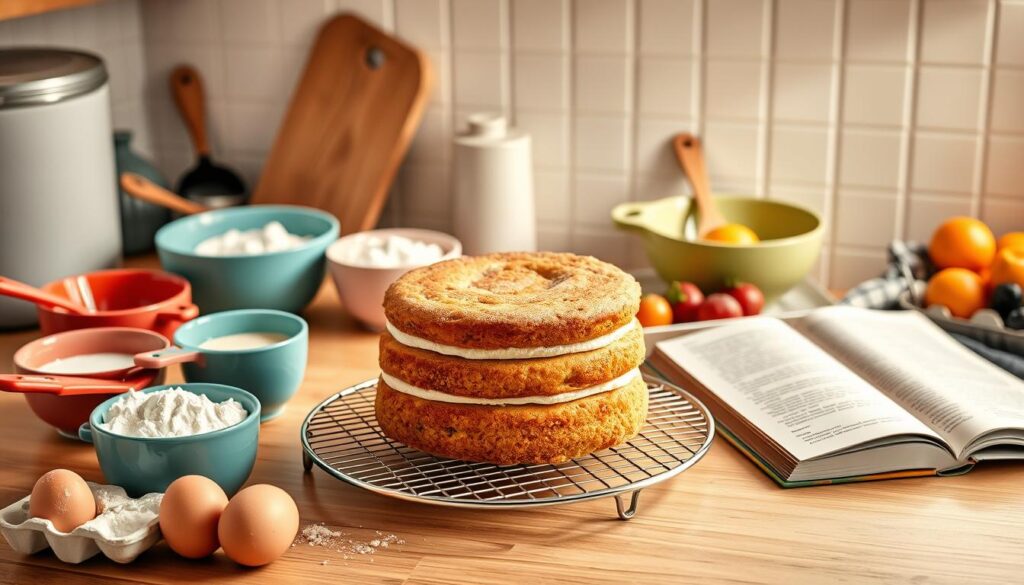
Essential Ingredients and Their Functions
Knowing the role of each ingredient in your home economics class cake recipe is key to a perfect bake. Let’s explore the dry and wet ingredients that make up your tasty beginner’s pastry.
Dry Ingredients Guide
The dry ingredients in your cake recipe include flour, baking powder, baking soda, and sugar. They work together to give structure, leavening, and sweetness to your baking basics.
- All-purpose flour: Offers structure and stability to the cake batter.
- Baking powder: Helps the cake rise and achieve a light, fluffy texture.
- Baking soda: Reacts with acidic ingredients to create additional leavening.
- Granulated sugar: Sweetens the cake and contributes to its overall flavor profile.
Wet Ingredients Overview
The wet ingredients in your cake recipe include eggs, milk, and melted butter or oil. These ingredients bind the batter, add moisture, and make the cake rich and moist.
- Eggs: Serve as a binder, helping to hold the cake together and providing structure.
- Milk: Adds moisture and contributes to the cake’s tender crumb.
- Melted butter or oil: Imparts richness and a soft, tender mouthfeel.
Ingredient Substitutions
If you’re faced with dietary restrictions or limited ingredient availability, don’t worry! There are several substitutions you can make to adapt your home economics class cake recipe.
| Ingredient | Substitution |
|---|---|
| All-purpose flour | Gluten-free flour blend or whole wheat flour |
| Granulated sugar | Coconut sugar, honey, or maple syrup |
| Milk | Plant-based milk (almond, oat, soy) |
| Butter | Coconut oil or vegetable oil |
Remember, when substituting ingredients, you may need to adjust the recipe’s measurements and baking times to achieve the desired results.
Step-by-Step Mixing Techniques
Learning the culinary arts education and baking basics starts with mastering mixing techniques. If you’re a student cooking enthusiast, follow these steps to make your cake batter perfect every time.
- Start by gathering all your dry ingredients like flour, sugar, baking powder, and salt. Sift them together in a big bowl. This makes the mixture light and prevents clumps.
- Then, mix your wet ingredients like eggs, milk, and oil or melted butter in another bowl. Whisk them until they’re well-blended.
- Slowly add the wet ingredients to the dry ingredients. Mix gently with a wooden spoon or rubber spatula. Don’t overmix, as it can make the cake tough.
- Stop mixing when the batter is just combined, with a few small lumps left. Overmixing can make the cake dry and tough.
The secret to baking basics is to mix gently. By following these steps, you’ll make moist, tender cakes. These will impress your family and friends.
“Baking is like chemistry, and the art is in understanding how the ingredients work together.”
Proper Pan Preparation and Baking Temperature
Baking the perfect cake from a home economics class recipe needs the right pan and temperature. The pan you pick and how you prepare it greatly affects your cake’s outcome.
Types of Baking Pans
There are many pans for baking cakes, each with special features. Here are some common ones:
- Cake pans: These are round, square, or rectangular. They’re perfect for classic layer cakes.
- Bundt pans: They have a unique ring shape. This shape makes a cake with a hole in the center.
- Loaf pans: Great for baking quick breads, pound cakes, and other loaf-style desserts.
- Sheet pans: Versatile for baking sheet cakes, cupcakes, and other bar-style treats.
Temperature Control Tips
Keeping the oven at the right temperature is key for a perfect cake. Here are some tips:
- Preheat your oven to the recipe’s temperature. Let it preheat fully before adding your batter.
- Use an oven thermometer to check your oven’s temperature. Ovens can be off by a few degrees.
- Don’t open the oven door too often. This can mess with the temperature and affect your cake’s texture.
- If your cake is browning too fast or not evenly, adjust the baking time.
Knowing about different pans and mastering temperature control will help you make great cakes. These cakes will impress your classmates and teacher.
| Baking Pan Type | Ideal for | Key Considerations |
|---|---|---|
| Cake Pans | Layer Cakes | Ensure even baking and easy release |
| Bundt Pans | Ring-Shaped Cakes | Grease pan thoroughly to prevent sticking |
| Loaf Pans | Quick Breads, Pound Cakes | Size and shape affect baking time |
| Sheet Pans | Sheet Cakes, Cupcakes | Ensure even heat distribution |
Common Mistakes to Avoid While Baking
Baking can be fun and rewarding, but it comes with its own set of challenges. Especially for beginner’s pastry and student cooking. We’ve listed some common mistakes to help you avoid them and succeed in baking basics.
One big mistake is overmixing the batter. This can make your student cooking creations tough and dense. Instead, mix gently until the ingredients just come together.
Getting the measurements wrong is another common error. Beginner’s pastry often struggle with measuring dry and wet ingredients correctly. Make sure to use the right tools and techniques for accurate measurements.
- Overmixing the batter
- Inaccurate measurements
- Improper oven temperature
- Opening the oven too frequently
- Forgetting to grease the baking pan
Keeping the oven at the right temperature is key for baking basics. If it’s too hot or too cold, your cake will be off. Use an oven thermometer to check the temperature.
Another mistake is opening the oven door too often. This can cause the temperature to drop, leading to uneven baking. Try to resist the temptation to check until the cake is almost done.
Lastly, don’t forget to grease the baking pan. A cake that sticks and crumbles when removed is a common problem. Always grease your pan well before adding the batter.
| Mistake | Explanation | Solution |
|---|---|---|
| Overmixing the batter | Tough, dense texture | Mix gently until just combined |
| Inaccurate measurements | Throws off the entire recipe | Use proper measuring tools and techniques |
| Improper oven temperature | Overbaked outside, underbaked inside | Use an oven thermometer to ensure accurate temperature |
| Opening the oven too frequently | Sudden temperature drop leading to uneven baking | Resist the urge to peek until the recommended baking time is almost up |
| Forgetting to grease the baking pan | Cake sticks and crumbles when removing | Thoroughly grease the pan before pouring in the batter |
By avoiding these common baking basics mistakes, you’ll be on your way to making delicious student cooking creations. Remember to stay patient, follow instructions carefully, and enjoy the process!
Decorating Your Freshly Baked Cake
Now that you’ve baked the perfect cake, it’s time to decorate it. Decorating can be fun, whether you’re new or have experience. It’s a great way to show your style and impress others.
Basic Frosting Techniques
Frosting is key for cake decoration. Start with basic techniques for a smooth finish. Here are a few to try:
- Buttercream frosting: A classic choice that’s easy to work with and can be flavored in various ways.
- Cream cheese frosting: Tangy and creamy, this frosting pairs well with classic desserts like carrot cake or red velvet.
- Whipped cream frosting: Light and airy, this frosting is perfect for delicate cakes or cupcakes.
Simple Decoration Ideas
Once you’ve got the frosting down, let your creativity shine. Here are some ideas to get you started:
- Sprinkle colorful sprinkles or colored sugar over the top of your frosted cake for a festive touch.
- Pipe swirls or rosettes of frosting around the edges of the cake for a elegant, professional look.
- Arrange fresh fruit, such as sliced strawberries or kiwi, on top of the cake for a refreshing and visually appealing design.
- Use a toothpick or a small spoon to create simple designs, such as zig-zags or wavy lines, on the frosted surface of the cake.
Remember, the key to successful cake decorating is to have fun and experiment. With practice, you’ll create beautiful desserts that show off your culinary arts education and cake recipe skills.
Storage Tips and Shelf Life
Now that you’ve made your delicious home economics class cake, it’s time to think about storage. Proper storage helps keep your cake fresh for longer. Follow these simple tips to keep your cake moist and tasty for days.
First, let the cake cool down completely before storing it. This step is key to avoid a soggy texture. Once it’s cool, you can choose from several storage options, based on your needs and the cake’s size.
For short-term storage, use an airtight container or a cake dome on your counter. This keeps the cake moist and at room temperature. If you have leftover cake, wrap each slice in plastic wrap or foil. This keeps it fresh.
FAQ
What are the key skills and equipment needed for baking in a home economics class?
In a home economics class, you’ll learn about kitchen safety and hygiene. You’ll also learn to use tools like mixing bowls and spatulas. Plus, you’ll learn how to read and follow recipes correctly.
What are the main ingredients used in the home economics class cake recipe?
The main ingredients for the cake recipe include flour, sugar, and baking powder. You’ll also need eggs, milk, and oil or butter. Knowing how each ingredient works is key to baking success.
How do I properly mix the cake batter to achieve the right consistency?
Mixing the batter right is crucial. You’ll need to mix dry and wet ingredients gently. This helps avoid a dense or tough cake.
What type of baking pan should I use, and how do I prepare it?
The pan you choose, like a round or square pan, matters. Grease and flour the pan to prepare it. Also, keep the oven at the right temperature for even baking.
What are some common mistakes to avoid when baking the home economics class cake?
Avoid mistakes like wrong measurements and overmixing. Also, make sure the oven is at the right temperature. These tips help you bake a perfect cake.
How can I decorate the freshly baked cake to make it look professional?
Decorating the cake is fun and creative. You can learn to frost and pipe the cake. Try using sprinkles, fruit, or chocolate shavings for a nice look.
How should I store the leftover cake, and how long will it stay fresh?
Storing the cake right keeps it fresh. Keep it covered at room temperature for a few days. Or, refrigerate it for up to a week. This way, you can enjoy your cake for days.
